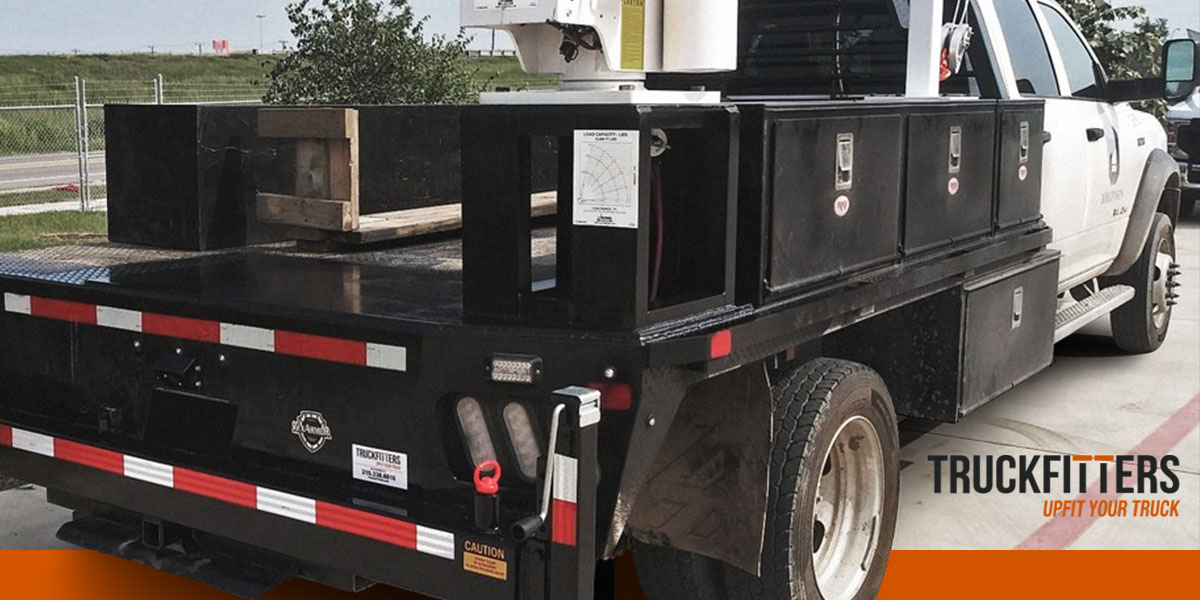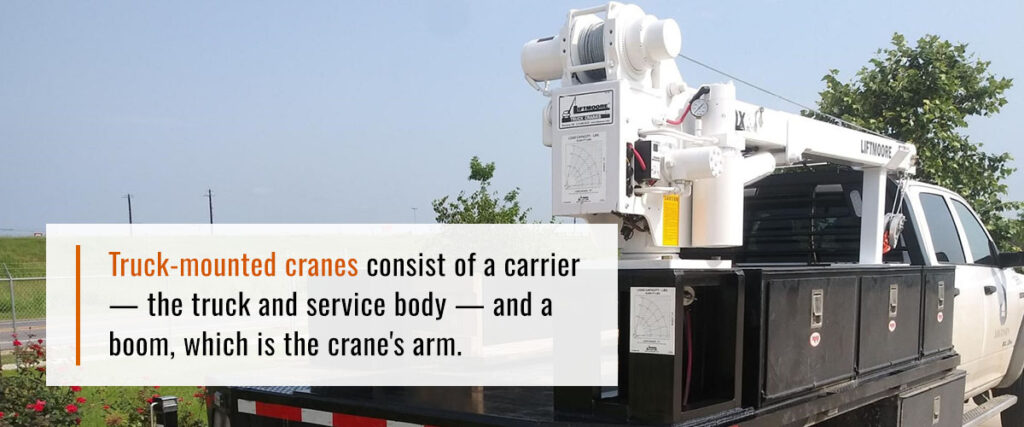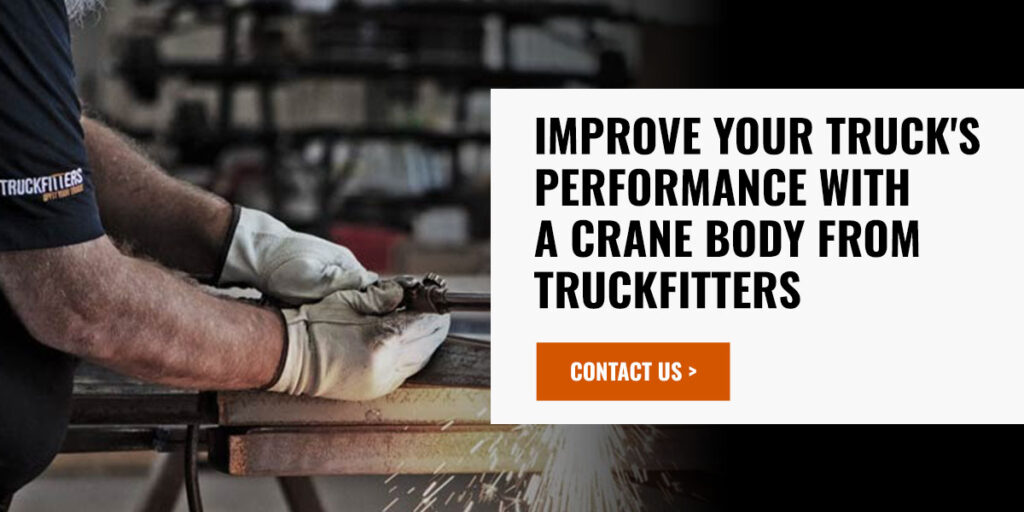

Service bodies are the ultimate workman’s tool, helping you modify your truck to suit your needs. They can fit extra equipment, tools and materials that standard truck beds can’t. When you need to lift heavy objects on the job, truck crane bodies are the best solution. But how do you know which one to choose?
Lucky for you, this guide covers everything you should know when selecting the right truck crane body for your truck.
You have numerous options when it comes to crane bodies, which can make choosing one feel challenging. However, the choice is a lot easier when you know what to look for. Here are five factors to consider before you buy a truck crane body:
What kind of stuff do you plan to haul around? You’ll need to think about this before investing in a service body crane. Objects vary in material, weight and dimensions, and each one will have specific lifting attachments and truck capacity requirements.
For example, you’ll need a more heavy-duty crane body for lifting cinder blocks than for tree branches. Knowing the specifics of the objects you plan to lift frequently will help you find a crane that’s appropriate for them.
Once you know what you’re lifting, you can consider what lift attachments you’ll need. Certain objects may need a specific type of attachment or rigging method. For pallets, you’ll need a crane with a fork pallet attachment. A bucket or basket is better for lifting workers.
Your truck crane body’s load capacity is probably the most essential factor to consider. Your crane body must support the weight of the objects you’re lifting — otherwise, you might damage your truck and the service body, warranting an unwanted trip to the repair shop. Most service body manufacturers list capacity in foot-pound measurements.
To get the foot-pound requirements, multiply the weight of the heaviest object the crane will carry by the maximum horizontal lifting distance. For example, if you lift objects weighing 1,200 pounds and need a maximum reach of 12 feet, you need a crane with a 14,400-foot-pound rating.
The service body and crane typically mount to the truck chassis, so you need to know the size of your truck and the type of truck chassis. The crane, chassis and service body should be a perfect fit to achieve peak performance and reliability.
Take a look at your truck’s specifications, including the make, model, engine and gross vehicle weight. Then, compare this information to the truck body and crane specifications to see which ones will work with it. The chassis’ gross vehicle weight rating constricts the weight of the body and crane and the crane’s lifting capacity.
The crane can be mounted at the vehicle’s front or rear. While mounting at the front provides more stability, mounting at the rear enables increased capacity.

Truck-mounted cranes consist of a carrier — the truck and service body — and a boom, which is the crane’s arm. With this setup, you can move the crane wherever you need to. You can also fit your truck with outriggers and counterweights for stabilization.
Below are the most common types of service truck crane bodies you can use:
When you need extra lift capacity and high performance in short-duty cycles, a hydraulic crane is your best bet. These cranes use hydraulic systems — consisting of hydraulic fluid that moves pistons within cylinders — to operate the boom. A hydraulic crane can deliver a large enough lift and reach range for most applications, making it the most popular crane body option.
If you’re looking for a more cost-effective option, consider an electric crane. These cranes use electric motors for power instead of the truck’s engine. You can operate the service truck crane while the truck is not running, saving you money and reducing wear and tear on your vehicle.
Electric cranes are ideal when you need something for occasional use. As a bonus, they’re quieter than hydraulic cranes and release fewer emissions, catering to your inner environmentalist. Just bear in mind that they’re only suitable for light-duty lifting tasks of 6,500 pounds or less.
Beyond the power source, cranes also differ in their boom structures. Most cranes have a fixed boom, but your application may require an articulating or knuckle boom crane. They can bend and move in more directions than standard cranes.
You might opt for an articulating crane if you work in confined spaces or on sites with overhead obstructions. These cranes operate lower to the ground and can reach over obstacles more effectively than their fixed-boom counterparts.
When you need to lift objects daily, you simply can’t go wrong with service truck cranes. Here are just a few of the benefits they offer:
Getting the right truck crane body for your truck will help you and your workers improve productivity and efficiency. If you need help finding the right one, look no further than Truckfitters. We’re a one-stop shop for all your truck upfitting needs, including truck service bodies with cranes.
Our team of upfitting experts will work with you to find the best solution for your truck and job requirements. We use only the best products from top manufacturers, including CM Truck Beds, Reading Truck Group and RKI. If you want something we don’t stock, we’re happy to source it for you. With our vast industry knowledge, fast turnaround times and exceptional service, you’ll be glad you chose us.
Come visit us at one of our locations, or contact us online for more information. We’re confident our team can transform your truck’s project ideas into a reality.
